Little Women by Louisa May Alcott
Young women of every generation, at some point, will stare at themselves in a mirror and ask: Who am I, who will I become? Their answers depend on their era, just as every generation that reads Louisa May Alcott’s Little Women will come away with different interpretations.
Lady Bird director Greta Gerwig’s newest, a Little Women film adaptation, opens on Christmas Day and captures the zeitgeist of today’s blunt conversations and instant social messaging.
Gerwig adds spunk and vibrancy to the teenage aspirations of Meg, Jo, Beth and Amy, who want to become the best or most famous, or at the very least well-to-do. “I want to be great or nothing,” cries Amy. “Women have minds, and they have souls, as well as just hearts,” says Jo. The events of the novel are turned into hijinx and desperate measures, adding drama that the original text could only portray with words.
There’s a stirring of early feminism, which we now concede was not to be denied. Gerwig throws in vignettes of Alcott’s meetings with her publisher, urging her to end her book with a happy marriage. We’ve come a long way. Or have we?
It’s a star-studded film, with Laura Dern as the wisdom-spouting Marmee, Saorise Ronan as Jo, Emma Watson as Meg, Florence Pugh as Amy, Eliza Scanlen as Beth, Meryl Streep as the irascible Aunt March, and Timothy Chalamet as Laurie, the boy next door. The costumes are visceral and the art direction is luscious. Expect a high box-office.
Susan Bailey, whose blog, Louisa May Alcott Is My Passion, keeps the author’s influence alive, commented by e-mail on several of the novel’s most well-known adaptations. It’s a record of how our awareness, seen through the prism of an 1868 novel, has changed with the times.
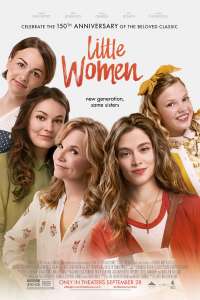 Little Women (2018)
Little Women (2018)
This modern retelling directed by Clare Niederpruem stuck to the story, with some tweaking. “For example,” says Bailey, “Jo’s ‘castle-in-the-air’ is not fame and fortune but rather ‘doing all things,’ experiencing life to its fullest. The film begins with Jo at age 29 but she acts as she did when she was 15, perhaps reflecting the prolonged adolescence that many 20-somethings experience today.” Instead of the Civil War, Mr. March is serving in the Middle East and communicates online instead of via letters.
 Little Women (2018, BBC/Masterpiece Theater)
Little Women (2018, BBC/Masterpiece Theater)
“This version of Little Women is a gritty and realistic look at life during the Civil War,” comments Bailey. “For the first time, we see the darker (and more significant) side of Alcott’s classic novel. We witness this in Mr. March’s experiences of war in images shown as Marmee reads his letter to the girls. We experience both Marmee and Jo’s issues with controlling their anger and we see them as being harsh, judgmental and impatient at times. We witness the Hummel’s desperate poverty, which transforms the sacrifice of the girls’ Christmas breakfast [that they delivered to them] from a charitable lark into a lesson in real life that took perhaps a bit of the girl’s innocence and naivety.”
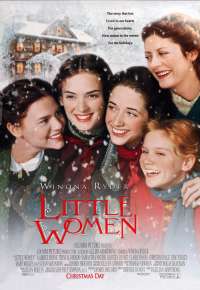 Little Women (1994)
Little Women (1994)
Bailey is effusive about this version. “This movie struck the emotional chord of Little Women far better than any other and is the most popular for good reason,” she says. “Director Gillian Armstrong achieved a wonderful sense of intimacy and warmth between the girls and their mother, and between Jo and Beth. The progressive views of the Alcott family were apparent in several lines of dialogue, such as a reference to the real-life Mr. March, Bronson Alcott, admitting an African American child into his school, the cruelty of slavery, corporal punishment in schools and women’s suffrage. Although Winona Ryder was considered ‘too pretty’ to be Jo, the spirit that she brought to the role easily overcame that problem. Christian Bale, in my opinion, was the perfect Laurie — mischievous, romantic, impetuous and stubborn. Claire Danes’ portrayal of Beth was heartbreaking and beautiful. Kirsten Dunst portrayed Amy in a more sympathetic and realistic light, actually being the right age for the character and having a childlike voice.”
 Little Women (1949)
Little Women (1949)
“I did enjoy June Allyson as Jo but I thought that Elizabeth Taylor as Amy was rather silly,” writes Bailey. This film used the same script as the earlier 1933 version, and “the emphasis was the same, on the girls growing into women, marrying and having children. The only real difference was that the movie was shot in Technicolor and it did not emphasize the war as much the previous [1933] movie. Anne Boyd Rioux, in her excellent book, Meg, Jo, Beth, Amy: The Story of Little Women and Why it Still Matters, mentions how the 1949 film focused more on consumerism and the home whereas the 1933 movie was centered more on the war and sacrifice.”
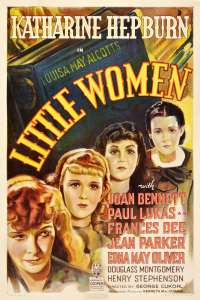 Little Women (1933)
Little Women (1933)
“Many believe that Katharine Hepburn is Jo March and I think in many ways she is,” says Bailey. “Certainly her energy, her tomboyish ways and her bluntness are very much Jo March. The movie shows its age because of the lack of emphasis on the creative pursuits and career possibilities for the girls … definitely more about the rite of passage for girls growing into womanhood, marrying and starting their own families.”
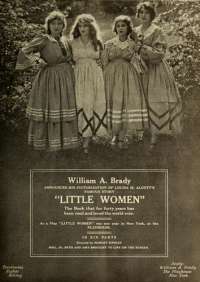 WHICH VERSION DO YOU LIKE BEST?
WHICH VERSION DO YOU LIKE BEST?
So, after you take in the newest film adaptation, let us know what you think in the comments below. Does it hold a candle to other recent versions, or do you prefer one of the classics starring June Allyson or Katherine Hepburn? Or if you really want to kick it old school, check out the 1918 silent film version!
Related Posts
Two New Movies Prove Appeal of Little Women by Joanna Poncavage
Little Women Grow Up in Meg and Jo by BookTrib
A Little Women Christmas Beautifully Illustrates the Season’s Good Will by Ann Nordland
Early Bird Books: 8 Books for Fans of Little Women by BookTrib
Buy this Book!
Amazon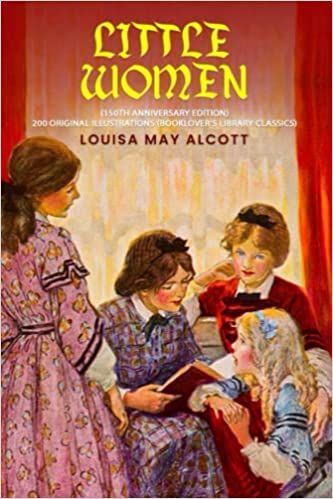





My favorite version is the 1994 movie.